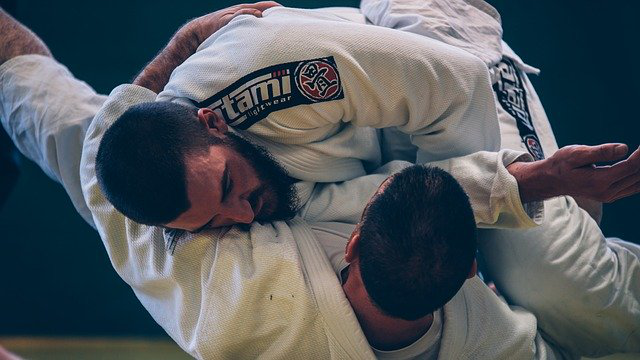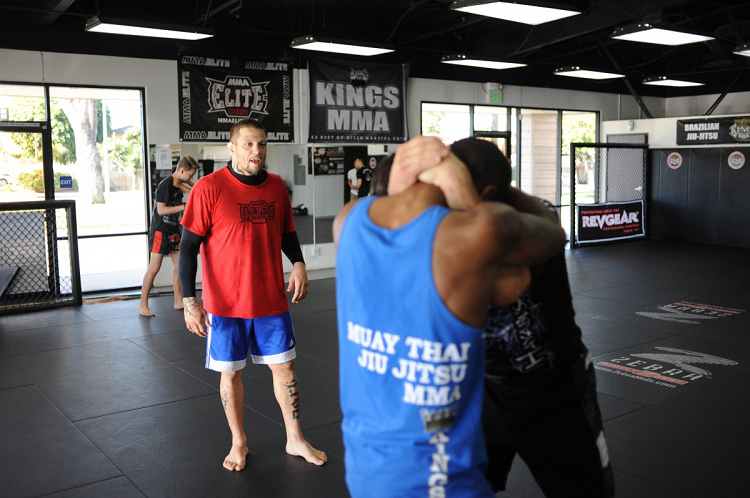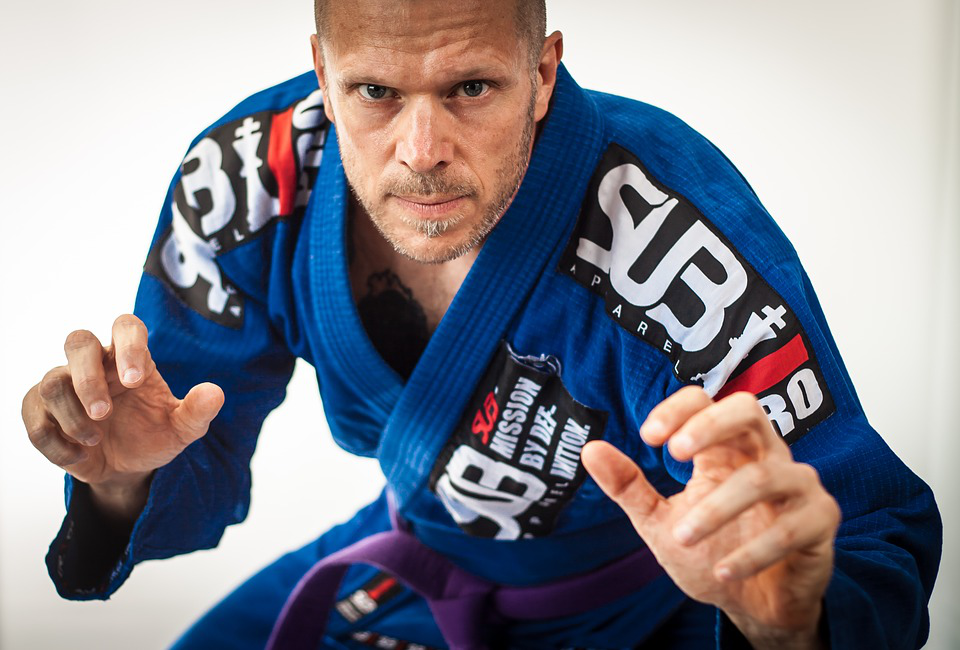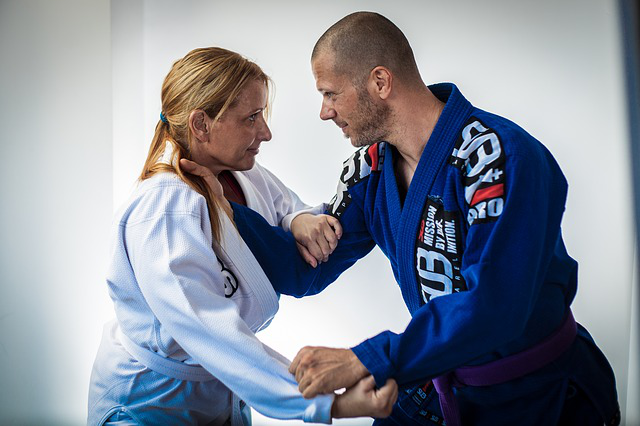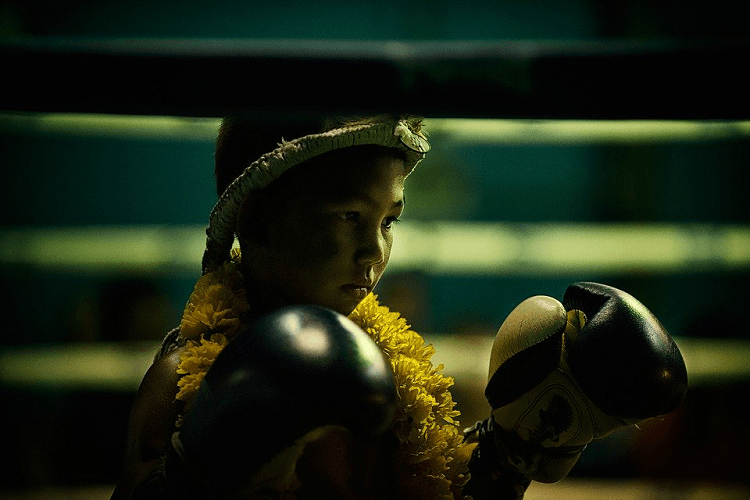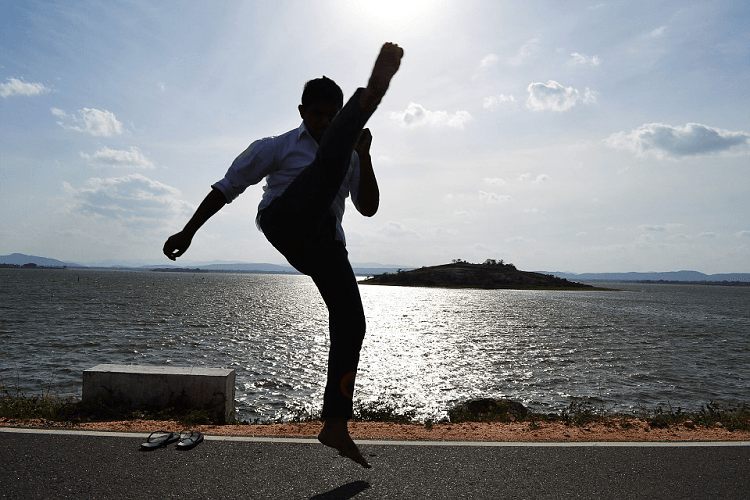Ways of the Warrior Within (Part 2 of 3): "The Code of the Warrior"
The Code of the Warrior is the second in a series of blogs that will explore the concept of the Warrior in history, how the “Warrior Code” has evolved in both eastern and western cultures, and how this translates into an everyday framework that defines the very spirit of the Warrior - a code that anyone can apply in modern-day society to better themselves, and their interactions with others.
We previously examined the basic concepts of the the Warrior mentality, the principles that drive a Warrior’s approach to resolving conflict and adversity, and the importance of optimism in the daily life of the Warrior. We now look back in time to examine how the concept of the Warrior has been developed throughout history, including the implications of social status as a Warrior, and the emergence of the soldier on the battlefield as a symbol of bravery and heroism. As previously mentioned, the noted professor Joseph Campbell taught us about the commonalities of the hero in world mythology, but we also see a similar overlapping of values and principles in real-world history as the Warrior Code evolved in different and unconnected societies, and at different points in history. Thus, to better understand what the status of a Warrior means in the modern world, we must first examine the historical record to determine what the Warrior meant to different cultures, and assess the overlapping (and consistent) themes of the Warrior Code.
How and Why are Rank and Social Status Granted to the Warrior?
Conflict amongst societies and great nations is as old as civilization itself. Before the settlement of large populations in established cities, small groups banded together in villages or migrated as hunter/gatherer tribes that were united by common traits, characteristics, or ancestry. Loyalty and “brotherhood” were important traits for these tribal societies. Inclusion was largely based on bloodlines and kinship, and many tribal clans would often shun outsiders as a method of self-protection, or as a method of preserving purity of culture within the clan. Thus, familial relationships served as a reinforcement to the loyalty and seclusive nature of many tribes.
Tribal societies also placed a significant amount of importance on “elders” in their group. Age and experience were often associated with wisdom and overall status-level within society. Thus, societal “status” tended to increase in importance amongst closed circles. Respect had to be earned, and often such societies developed rights of passage for both males and females, where success in one or more difficult tests served as a “right of passage” into adulthood, responsibility and leadership, allowing for broader acceptance within the closed group - a desired elevation of social status and ranking.
The concept of the Warrior Chief also became very important as tribal society evolved. The Tribal Chief, Warrior Chief, or leader-of-the-pack, often followed the “alpha status” model observed in groups of wild animals, such as wolves. This aligns with many stories, legends, and facts which convey that many Chieftains were acknowledged and held in the highest regard for proving themselves as superior combatants and strategists during battle with individuals, rival clans, and tribes. Thus, proving your mettle through combat provided the ultimate status within Tribal Society. Chieftains could be challenged (and usurped) through combat or some physical test of supremacy. The ruling Warrior Chief enjoyed an elevated status in society, often claiming first-rights to the spoils of victory in warfare, and the chief was often secluded from the ordinary rank-and-file. Anyone approaching the Warrior Chief was expected to do so in a reverent fashion, with head bowed low in a demonstration of respect (or fear). So we see the concept of the Warrior Chief emerging as a crucial symbol of respect, and elevation of status in ordinary society.
This concept of alpha-dominance and elevated status translates into our modern version of the World Champion in modern combat sports, such as Karate, jiu-jitsu, MMA or Boxing. The World Champion has chosen a form of physical combat in which to prove his/her mettle. Like a Warrior Chief, the Champion enjoys an elevated status in society that is envied by most, and the Champion is always at risk of being dethroned by the next top contender. Although ego, wealth, and social standing may drive the World Champion to perform during each challenge, these things rarely provide the Champion with the perseverance needed to meet the demands of each challenge. Most Champions will tell you that it is the pursuit of excellence, and the burning desire to continually challenge one’s self that keeps the Champion moving forward.
The challenge for the World Champion is not the adversity of competition - rather it is the challenge from within, and the Champion’s fight against his/her natural desire to “quit” that keeps the fight alive. The World Champion continues to excel, but not necessarily because of the wealth that can be gained, or the rise in social status. These are merely byproducts, or an end-result to the challenge that lies within - the challenge that we all face, when we want to “quit” in the face of adversity and choose an easier path forward, rather than risking all in a daring run at the championship ranks.
Why do City States and Nations need Soldiers?
Although we emphasized in our previous blog that a Warrior is not necessarily a soldier, the concept of the soldier-Warrior is framed in our psyche due to a rich history of military conflict, and there is much we can learn from these great Warriors in history. So when it comes to the development of the soldier as a Warrior, how did our culture of combat develop over the millennia as our civilizations evolved from those of the hunter gather, to the times of agricultural development, and now to a technology-driven civilization? This progression of civilization has enabled populations to thrive in ever increasing sedentary lifestyles for those that maintain or acquire a wealth of resources, technology, and “know-how” through any means - even war. So, Where did the battle begin and where was it first waged? Is conflict merely a way for society to protect its cultural, economic stability, and way of life?
By most accounts, neolithic society began to thrive after 12,000 BCE, and the first archaeological evidence of developed cities can be found in the fertile regions of the middle east, known as Mesopotamia. Fresh water and fertile soil set the stage for improved farming (food production), which in turn, freed up large portions of the community to explore and develop the arts, architecture, science, medicine and religion. This is when archaeologists find evidence of the earliest great cities that flourished as early as 10,000 BCE. These early settlements experienced some of the first occurrences of sizable populations that lived and thrived behind city walls. Although there is also evidence of tribal skirmishes amongst early neolithic populations, it is believed that formalized warfare between societies likely began around 7,000 BCE, and was prevalent in society by 5,000 BCE. This early warfare likely manifested as a struggle for vital resources, territorial boundaries, and the general goal of preserving lifestyle, bloodlines, or cultural heritage. Accounts of the first great struggles between mighty societies are found in the archaeological records of ancient Egypt.
The early societies of Egypt were split into two mighty nations, knowns as “Upper” Egypt and “Lower” Egypt. It is believed that these two societies existed independently and likely engaged in warfare with one another, until the ancient king Narmer (sometimes referred to as Menes) unified both upper and lower Egypt into a single nation between 3000 and 3200 BCE. Although there are varying theories regarding Narmer’s identity and role within the dynasties of Egypt, most consider him to be the first dynastic King to rule over both Upper and Lower Egypt. Following this great unification of societies and cultures, accounts of warfare between Egypt and other evolving nations would continue for many centuries to follow. Ancient Egypt provides one of the first recorded accounts of conflict between mighty organized armies - warfare as we know it today.
The Evolving Myth of the Warrior-soldier - the Quest
As discussed in our first blog series, the myth of the Warrior has been handed down as a rich tradition in both history, and the mythology of many societies. For example, the mythic tales of the medieval knights of King Arthur’s Round Table represent an early rendition of the Warrior-myth in western society. Although many believe Arthur is based on one (or more) historical figures, the myth of Arthur has taken on a unique persona that defines our concept of chivalry, and the fight for righteousness.
Even the names of these mythic characters of King Arthur’s court shed light on the basic principles that were being communicated as we read about Percival on his endless quest to find the Holy Grail (the name Percival or “Percival” is taken from the root term “Perseverance”, meaning to persist, have determination, or to endure). The early character of Percival was replaced in later literature with the character of Galahad, whose name is again taken from the root term of “Gallantry”, which means bravery, courage, or Chivalry - the underlying theme for the myth of King Arthur and his knights of the Round Table. The principle attribute for all of the Warrior-knights in King Arthur’s court is an almost spiritual connection to the underlying cause or quest - an undying devotion to a righteous cause that allows the hero to rise above and achieve things beyond the normal capability.
These tales of Chivalry are also found in the quest of the historic Knights Templar, a group of Warrior-monks that famously defended their cause during the medieval Crusades, only to be betrayed and eliminated (with many executed) during the 14th century. For almost two centuries, these knights and the red cross emblazoned on their shields, was a symbol of all that was considered “good” in medieval society. Although the politics involved with the rise-to-power of these knights was quite complex, the perseverance of these Warrior-knights and their devotion to the cause (as well as the price ultimately paid for their resolution), stands as an historical reference-point to the values established by the mythical tales of King Arthur.
The Warrior concept of Chivalry in western culture evolved from a series of both written and unwritten codes of conduct propagated during medieval times. This code served as a guide to social and moral standards for the medieval Knight. The concept had its genesis in the early days of the Holy Roman Empire and arose from the horse cavalry soldiers of earlier Roman battlefields. The term is derived from the French root term chevalerie (horsemanship), and originally focused upon the concepts of military bravery in battle, as well as service and duty to country. The literature of later medieval society elevated this concept to represent a framework of honor and nobility to which all Knighted Warriors must adhere. The code of Chivalry also helped to establish general social and moral virtues for a society without established bodies of law - a guide to living life with honor and integrity. Thus, Chivalry was a framework that even a peasant or common citizen could aspire to - even if you were not a knighted soldier, you could aspire to the principles of a Knight-Warrior in your everyday actions.
Similarly, in Eastern cultures, the Samurai warrior takes on a near-mythical connotation, very similar to the medieval knights of western civilization. We read the tales of these mythic knights as they faced one-another in battle-field duels with razor-sharp swords, but what really drove these Warriors forward each day? For the Samurai, the Warrior code of Bushido became a way of life, and an ethical system to guide the Samurai in a harsh feudal society. The code of Bushido has often been compared to the concept of Chivalry in western society, and the literal translation of “Bu-shi-do” means “military-knight-ways”. As a code, Bushido was not simply a way of acting as a soldier on the battlefield - Bushido was instead a moral code to follow in all walks of life, and could be compared to an informal “Constitution”, or unwritten body of laws that one aspires to live by.
Whether it be the mythical tale of King Arthur, the historical accounts of the righteous Knights Templar, or the combat skills of the Japanese Samurai Warrior, the training and devotion to the “quest” for each of these mythic Warrior-soldiers takes on an almost spiritual aspect of self-development. There is no “stepping up to meet expectations” or “rising to a new level to overcome the challenge”. Your best performance in battle will be equal to your worst performance in training – so train hard to make sure your worst performance is good.
Thus, the “quest” in these ancient tales is not about a journey to acquire a tangible object such as the Holy Grail; rather, the quest is a journey in search of perfection - perfection in physical skills or any action, perfection in attitude, and perfection in the adherence to the moral code of the Warrior.
Bushido and Chivalry - A Common Ground for the Warrior
The western concept of Chivalry, and the eastern concept of Bushido are close in comparison, and these principles have been embraced by many martial artists and soldiers in both eastern and western cultures. The code of Chivalry can be summarized in a few key concepts that focus upon (1) Courage/Bravery, (2) Justice/Righteousness, (3) Mercy/Compassion, and (4) Faith/Loyalty. These principles serve to guide the Warrior/Knight in both action and word, and provide a moral compass of sorts. These simple principles can also apply to anyone in any walk of life, and many of the principles discussed in our first Warrior blog series can also be found in these simple virtues of Chivalry.
When turning to eastern culture, we see that Bushido is also summarized in a handful of simple principles that closely align with the western principles of Chivalry. This ancient framework provided the Samurai with an established code of conduct - whether in battle, or at home. The framework of Bushido can be summarized as follows:
Justice/Duty (“gi”): Represents the concept of “doing the right thing” or “righteousness”, based on your moral compass. Justice comes from within (not from without), so the Warrior strives to act righteously, even if others do not. The Warrior always strives to act in a manner that serves the common good of society, and promotes social justice, in lieu of personal desires. Thus, the Warrior acts selflessly to promote a greater good for all.
Courage/Bravery (“yuu” or “yuuki”): Courage in any task is a fundamental concept for the Warrior. Whether this means a fight on the battlefield, or simply fighting your fear to ask someone out on a date, the concept is the same for all - fight your fear, and nurture courage in the face of conflict and adversity. The Warrior continually challenges fear and the natural desire to quit when things become difficult. Many aspects of life come with risks, and accepting risks allows you to life to the fullest (rather than hiding in the dark).
Benevolence/Compassion (“jin”): Benevolence and compassion for others is the glue that binds humans together during social interactions. The Warrior is never selfish, and always strives to nurture compassion in society through the behaviours toward, and treatment of, others. This concept of benevolence is critical for those who develop superior skills in any walk of life, and following this principle ensures that your skills, whatever they might be, will always promote the greater good (as opposed to personal gain or power over others).
Veracity/Truth (“makoto”): Means truthfulness for the Warrior in both words and action. A Warrior does not deceive, and always expresses conviction behind words. In essence, a word is as good as a bond or contract, and the Warrior will always keep a promise to others. Thus, a word is as solid as action, because the Warrior will never fail to deliver behind the word.
Politeness/Respect (“rei”): Politeness and common respect in social behavior and interactions with others is a key principle for any Warrior. A Warrior feels no need to prove prowess, abilities, or expertise, and a Warrior will never be cruel or harsh to others, particularly in any manner that promotes self-ego. Respect for others can be viewed as the opposite of self-ego and personal pride. Pride is a great virtue, but it can also become a heinous flaw in character.
Honor (“meiyo”): Honor in character and actions serves to build reputation. Honor to your personal convictions can define your decisions, actions, and your face (reputation) perceived by others - society judges based on reputation and character, and thus, honor can define who you are and what you stand for. Honor works hand-in-hand with the concepts of Virtue and Justice to define the very character of the Warrior.
Loyalty (“chuugi”): The Warrior always acts faithfully, and remains loyal to anyone for whom the Warrior accepts responsibility. The Warrior is also fiercely loyal to his/her convictions and actions in life - the Warrior never compromises beliefs, runs away from actions, or tries to blame others for failures. Thus, this concept can be summarized as unconditional loyalty to others and to the convictions behind your actions.
The principles of Bushido are embeddded in martial arts around the world. Analyze the traditions and philosophies of karate, Jiu Jitsu, Aikido, Kobudo, Tae Kwon Do, Judo, etc. and you will find this common thread of principles.
So, What is our Perception the Modern Soldier?
For many, the concept of today’s Warrior is embodied in the formalized military forces of our nations, and the pinnacle of the Warrior-soldier is best exemplified by the elite special warfare operations groups, such as the U.S. Navy’s SEALs, the British Special Air Services (SAS) Commandos, the French GIGN, and the Canadian Joint Task Force 2 (JTF2).
One of the first public examples of these specialized Warrior groups in action was the 1980 raid on the Iranian Embassy in Hyde Park, London by a team of British SAS Commandos. The world watched in awe as live news cameras captured a group of SAS Commandos dressed in black with faces covered, as they fast-roped from a helicopter onto the roof of the building, and retook the embassy in a daring operation. This was the first time the world saw elite warriors in action as the military operation unfolded live on television screens around the world.
In another example of daring Warrior-soldiers in action, Air France Flight 8969 was hijacked in Algiers in December 1994 by a group of extremists who killed three of the passengers, and threatened to blow-up the plane. Assessing that there were no other alternatives, the French Gendarmerie called into action the Groupe d'intervention de la Gendarmerie nationale (GIGN), an elite police counter-terrorism and hostage rescue unit. During the raid to rescue hostages, roughly 400 rounds of ammunition were fired within the confines of the Airbus A300 plane in a scene that was described by one hostage as “the Apocalypse”. I cannot begin to imagine the determination of these Warrior-heroes, as they rushed forward through the aircraft door and into a hail of gunfire, without concern for their own safety as they focused on their goal of saving innocent lives.
Most recently, the world learned of the 2011 raid on Osama Bin Laden’s compound in Pakistan by U.S. Navy SEAL Team Six. In a raid that involved approximately 75 soldiers and multiple aircraft, two dozen SEALs descended on the compound, moving from room-to-room as they pushed forward in their mission. This critical mission, later dramatized in the hollywood movie, Zero Dark-Thirty, had been monitored live by the US President, and is considered a testament to what Warrior-soldiers can achieve when faced with adversity.
Most of us will never be a part of these elite Warrior groups, so how does this translate into something that you can apply to your everyday quest for Warrior-excellence?
What can be Learned from These Elite Warrior-Heros?
Although these are excellent examples of modern Warriors in action, many do not know that each of these daring missions was almost a failure from the onset. During the British SAS mission at the Iranian embassy, the sergeant who descended to led the assault into the building became tangled in his rope, and was severely burned in a fire started by concussion grenades - but this did not stop him from achieving his Warrior’s mission. The team managed to cut him loose, and although injured, he dropped to the balcony below, and did not hesitate as he followed his fellow warriors into the Embassy, and towards a fate unknown.
Similarly, as the GIGN operators commenced the assault on Flight 8969, the moveable stairs used to gain access to the aircraft were adjusted too high,and above the doorway threshold. Thus, the crucial “breach” of the aircraft door was almost a catastrophic failure, because the lead operator could not open the hatch. This misstep occurred during the most critical moment of the raid, but the lead operator managed to finally pull the door open by literally dangling 20 feet off the tarmac, as the remaining operators stormed the plane behind him.
We also see a similar situation with the Pakistan operation led by SEAL team six. As the team made their way into the compound, they encountered doorways that were sealed shut, hallways that turned into dead-ends, and a crucial stealth helicopter supporting the soldiers in the mission crashed, and had to be destroyed on-site - but the team persevered to accomplish the mission without the loss of a single soldier.
These Warriors weighed their goals against the “cost of conflict”, and were resigned to the conflict, even though it might mean the ultimate sacrifice. In each of these situations, things went wrong from the onset, but this did not hinder their resolve or their commitment to achieve their goals. These are amazing examples of hero-Warriors who problem-solved in the moment when confronted with unforeseen obstacles that had the potential to stop them from reaching their objective.
What better example of pushing through adversity to reach your goals? As mentioned in our first blog, when faced with a crises a Warrior does not panic, but will march into the face of adversity, striving forward incessantly, until there is no longer adversity present. These accounts of modern hero-Warriors demonstrate the important principles of courage, optimism, and calmness in the face of adversity - principles that you as a Warrior can adopt in your everyday life.
What is the Warrior Code, and how do we Apply the Warrior Code in everyday Life?
Whether examining mythological warriors in literature, or modern-day soldiers on the battlefield, we see a common goal - courage in the face of adversity, the search for excellence and perfection in every task, and a focus on a moralistic code or framework to guide words and actions. We also see that the key principles of Chivalry and Bushido serve as a common universal theme throughout history in both eastern and western cultures - a theme that seems universal amongst many societies in history.
Above all, the Warrior must have courage to face the task, and this applies whether you are a soldier on the battlefield, a nurse in the emergency room, or a student in the classroom. Courage and fear are intertwined - A Warrior is always afraid, but the Warrior pushes fear aside to overcome great challenge. Thus, courage does not simply mean courage on the battlefield, but also courage to face other difficult challenges and unpleasant, undesirable, or mundane tasks in life.
Conviction and resolution are also important. For the Warrior, the spoken word is as good as a bond or written contract, and holding true to words and convictions serves as a bedrock foundation for the Warrior code. Loyalty to personal convictions and moral codes, as well as loyalty to friends, family, and persons under the Warrior’s care reinforces these bedrock convictions - the Warrior never shies away from challenge or duty, and always strives to “do the right thing” in the interest of moral justice and the greater good of society. The Warrior also embraces mercy and compassion, and nurtures those in close proximity - the Warrior is always eager to lend a helping-hand, and never makes excuses for failure.
Everyone, no matter size, shape, color, or capability, can adhere to the Warrior code. The Warrior is not defined by muscle, prowess, accomplishments, or social status and accolades. These factors were critical in establishing social ranking for Tribal societies of old (something that helped to maintain order and efficiency during a time with no formal laws or constitution), but they are no longer relevant to the modern Warrior. Rather, the modern Warrior can be defined as anyone embracing these principles as a guiding code to life, and your status as a Warrior must always be defined by YOU, (not others).
Therefor, success in life’s endeavors often falls squarely on our own shoulders, not the shoulders of others. So when embarking upon your personal quest in life, you must first ask yourself one simple question … do you want to be a Warrior?
This is the second in a three-blog series that began with The Ways of the Warrior Within. In the next and final blog, we will examine the translation of the Warrior code in the modern world of Business, and present some examples of modern Warriors in action who exemplify the Warrior Code.
